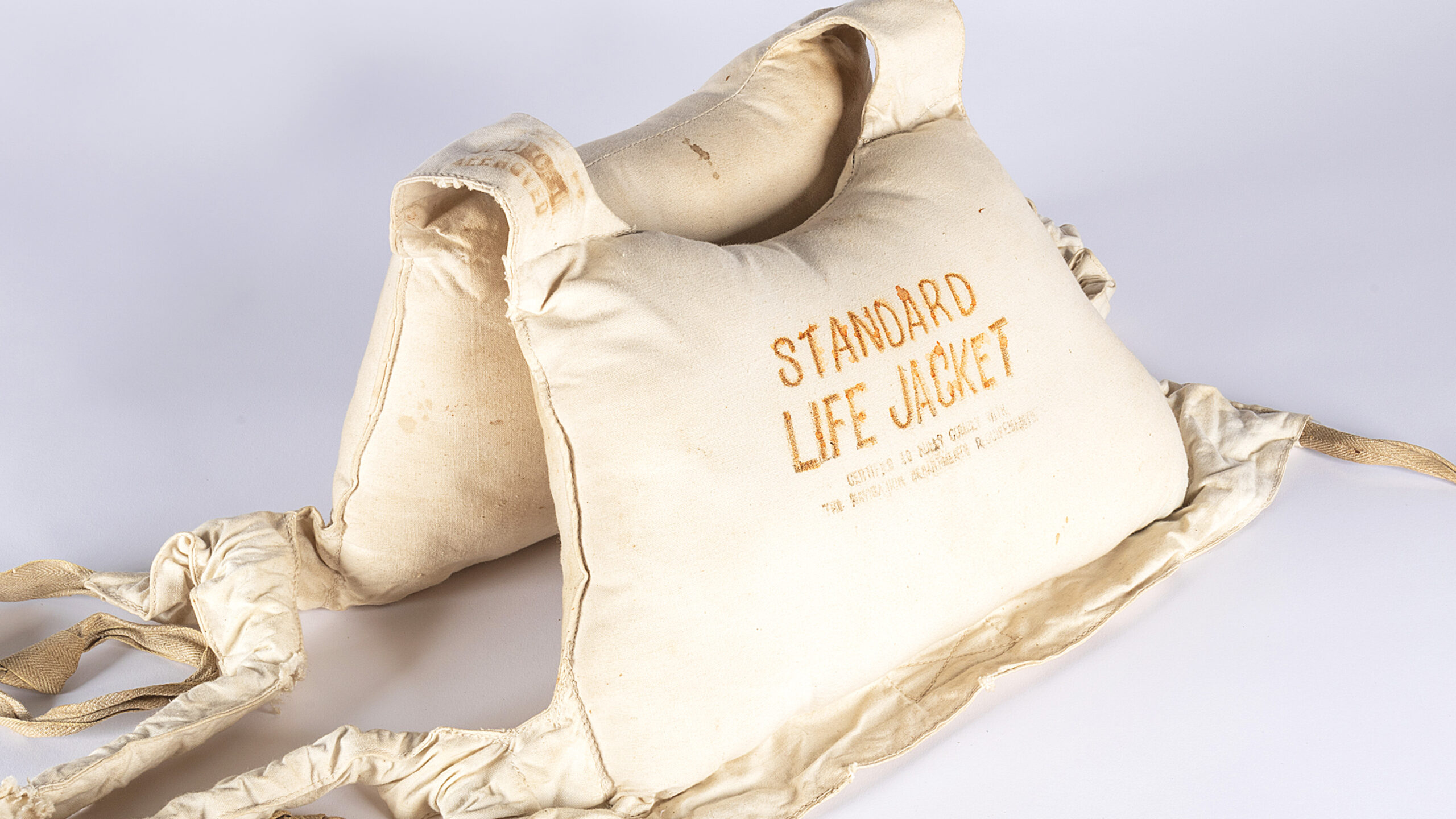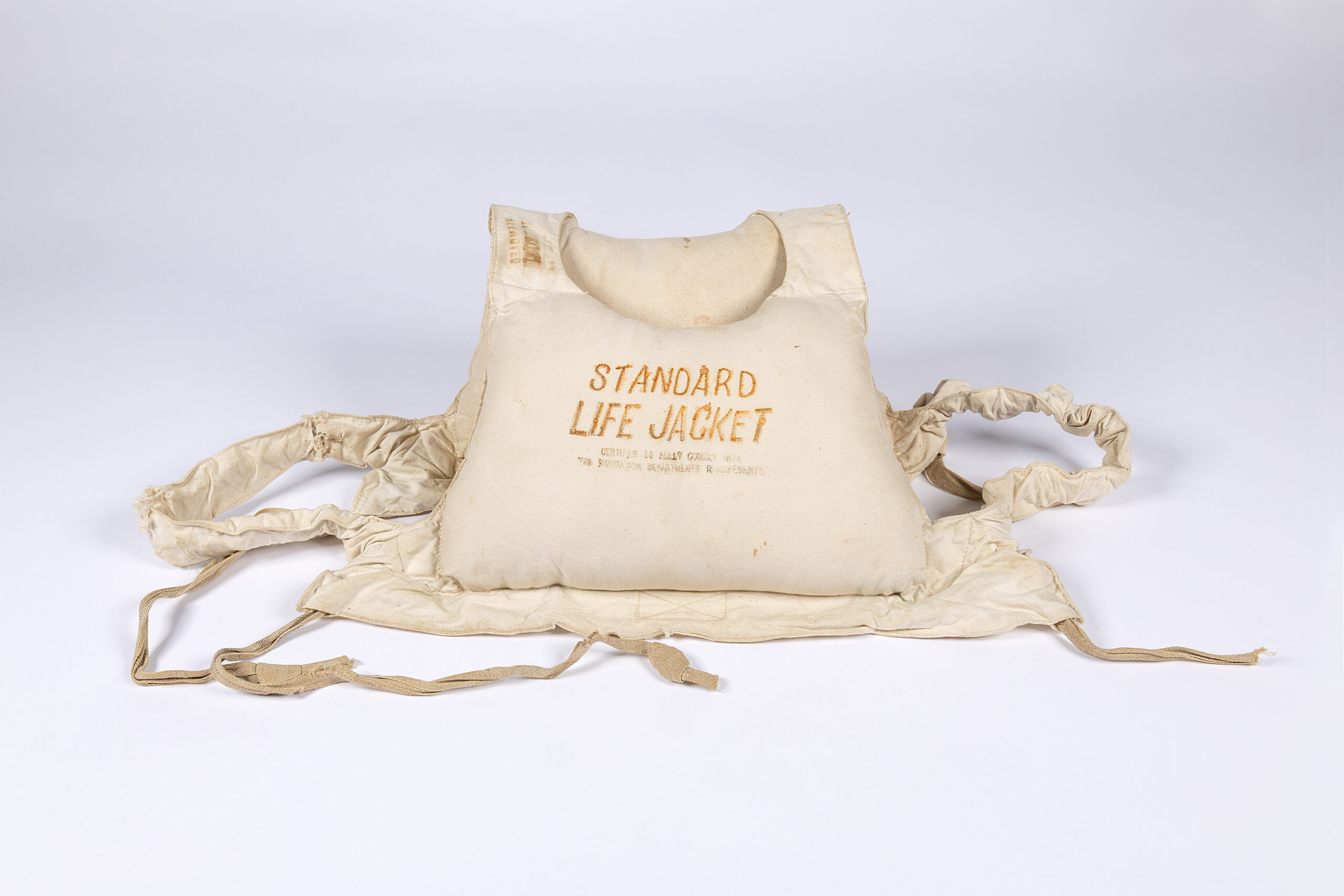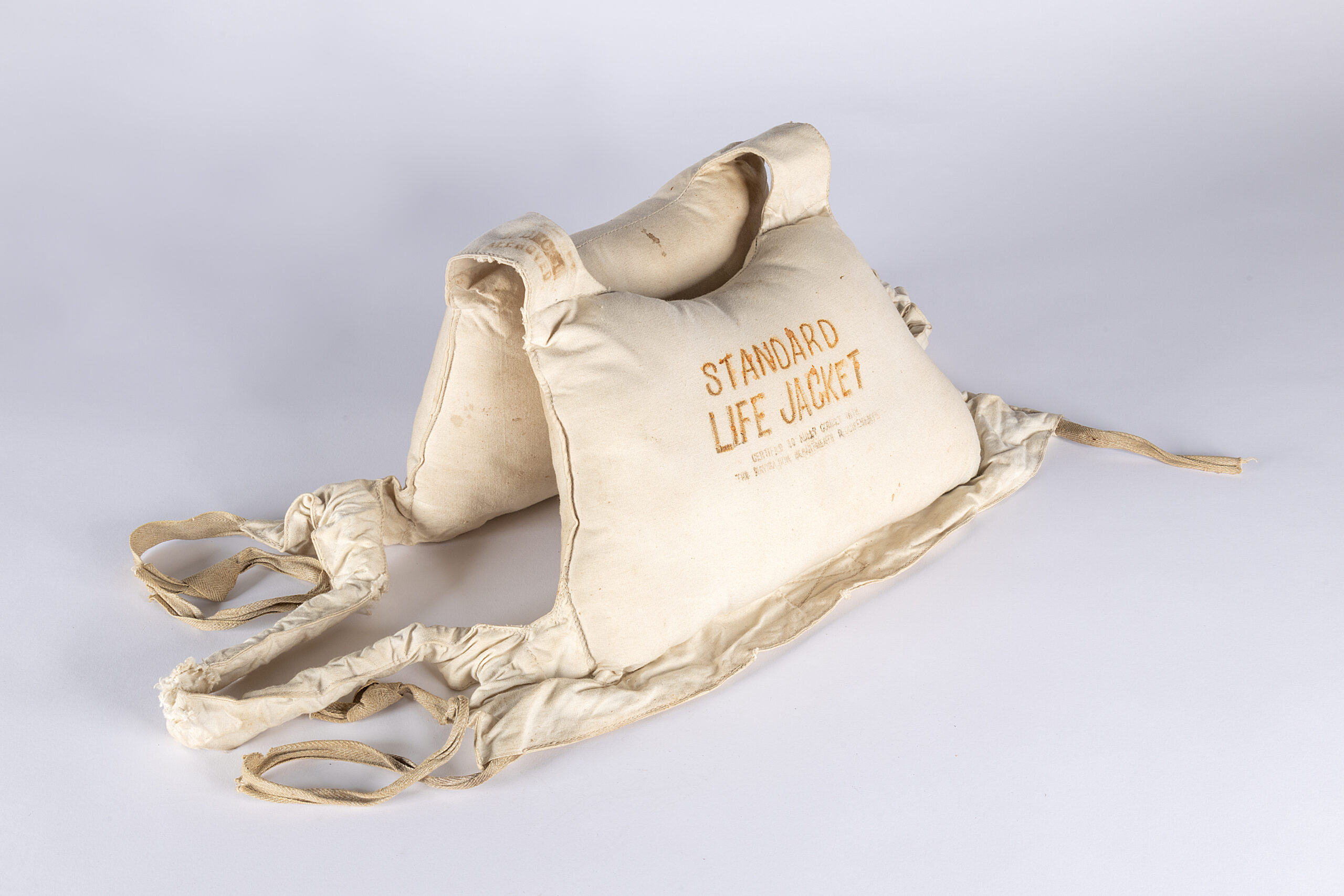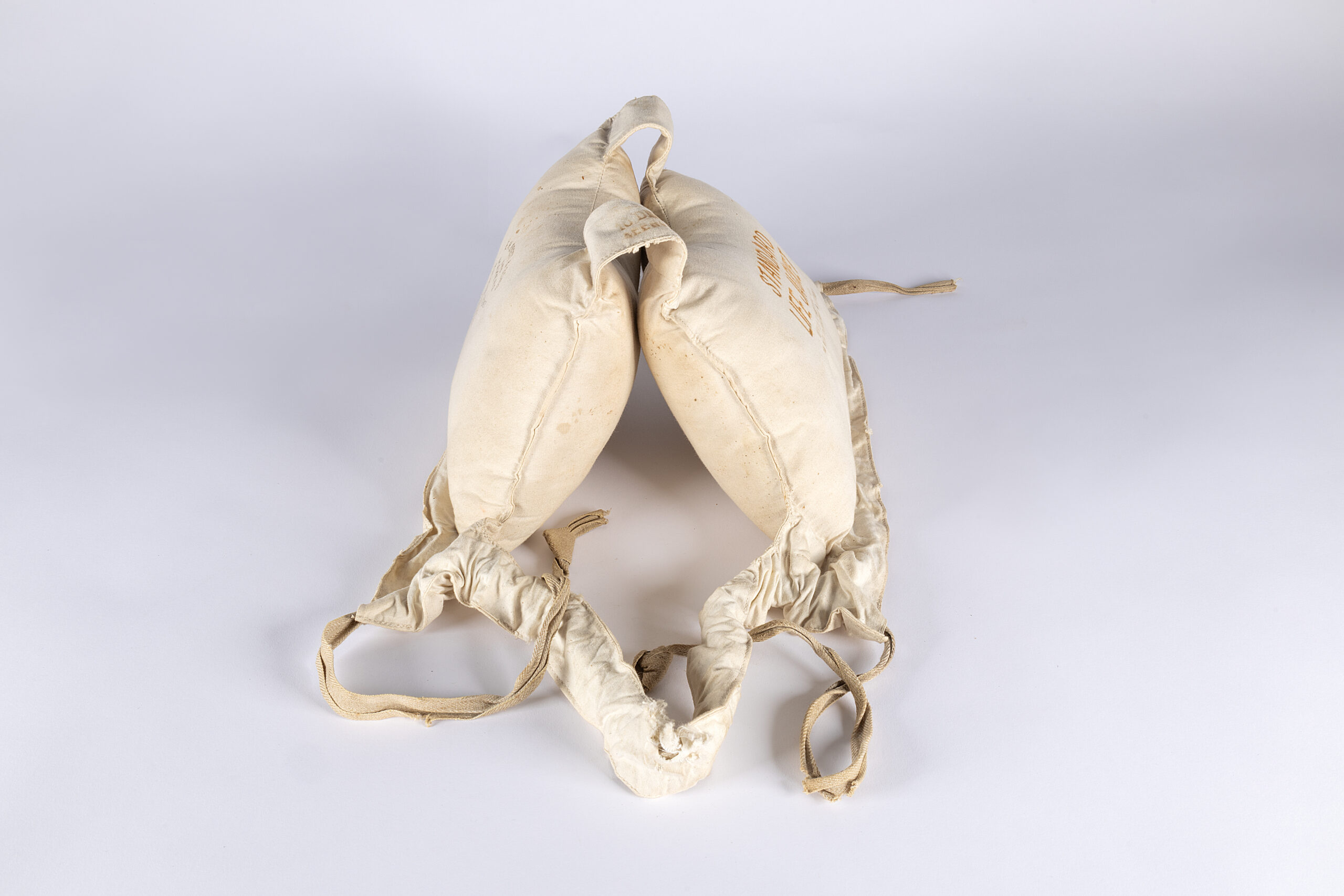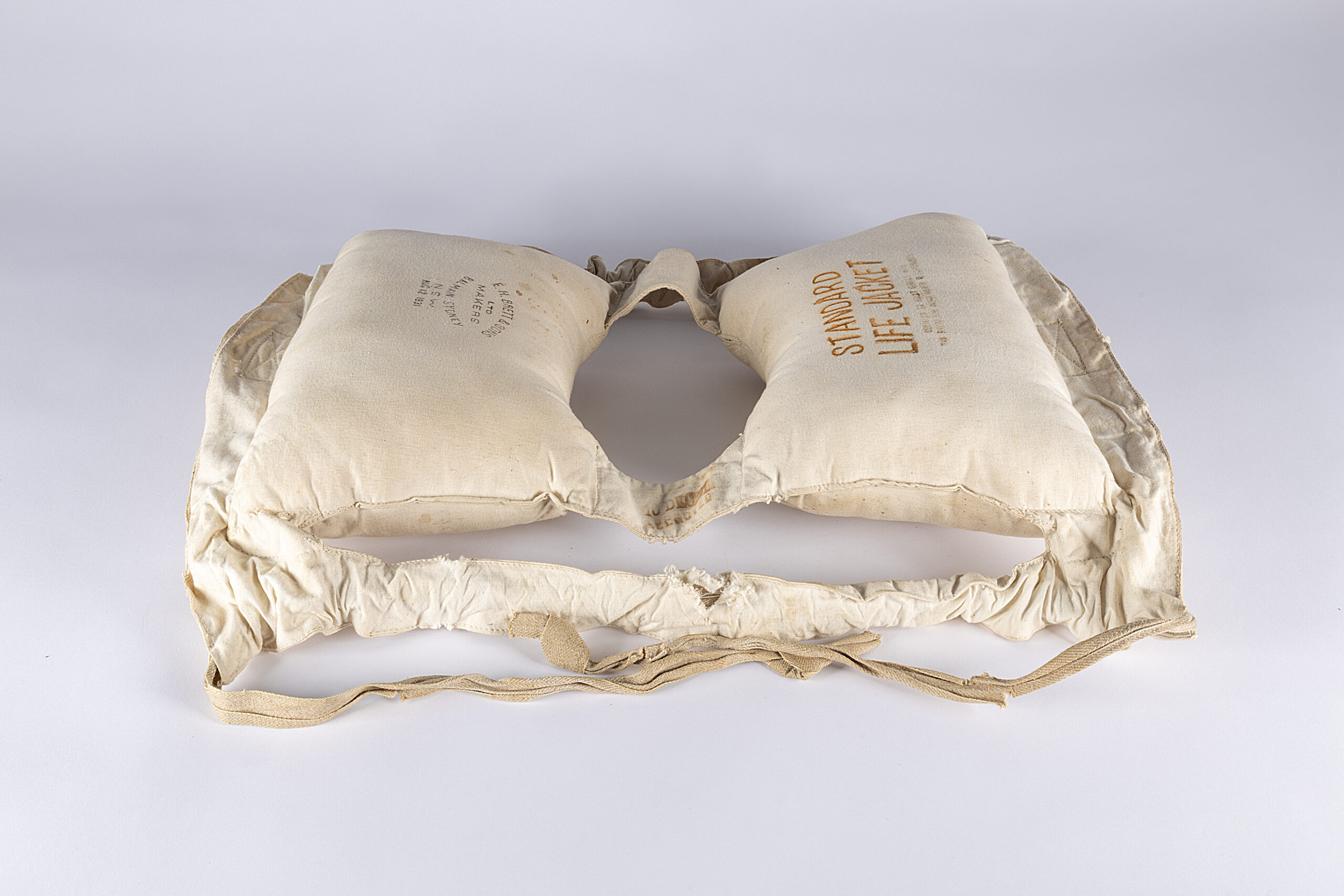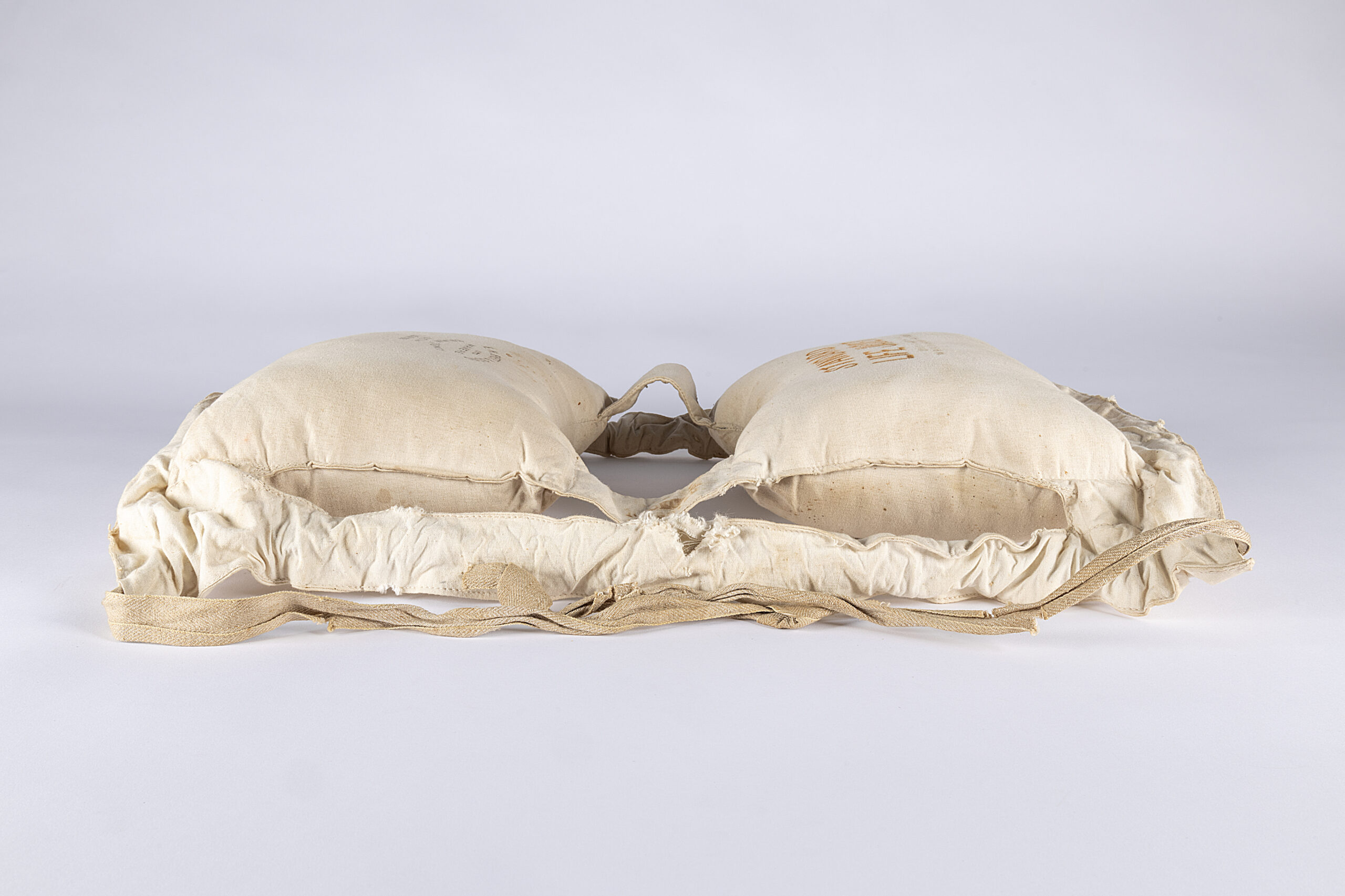Seaside Safety
Meeting the Needs of Iluka's Leisure Seekers
From the late-1900s the small settler community at Iluka promoted the village as an idyllic spot, to locals and other leisure seekers. The earliest holiday accommodation provided was at John Rush’s North Head Hotel, built in 1874.
By 1916 the Hotel underwent an upgrade to meet expanded demand for either the weekend get-away, or a longer holiday far from work and home. Iluka’s local leisure seekers came from as near as surrounding villages, and the town of Grafton. Other visitors were from wider NSW and interstate.
For much of its early history, though, the only way to get to Iluka was by boat. Among the ferry boat services offered was that provided by William H. ‘Bill’ Hickey (1886–1973) and his timber launch Beryl.
Bill and Beryl ferried tourists across the Clarence River between Iluka and Yamba from 1909 to 1955. To ease the anxieties of his most nervous passengers and be ready for real safety risks, Bill had this bulky lifejacket, and others like it, tucked under each of Beryl’s seats.
Demand for tourist facilities at Iluka, and nearby at Woody Head, arose from wider changes — including the growth in population and gains made by workers in having spare-time.
From the mid-1800s to the early-1900s, the population of New South Wales increased at a remarkable pace. Settler communities were well established outside of Sydney and at other large settlements, having sought land and livelihoods in country areas.
Alongside population expansion, the Australian labour movement made gains in the struggle to improve employment conditions for (some) workers – including the introduction of the eight-hour workday.
Less time spent at work gave workers more leisure time and as a result, activities like sport and trips to the seaside became increasingly popular ways to spend time.


